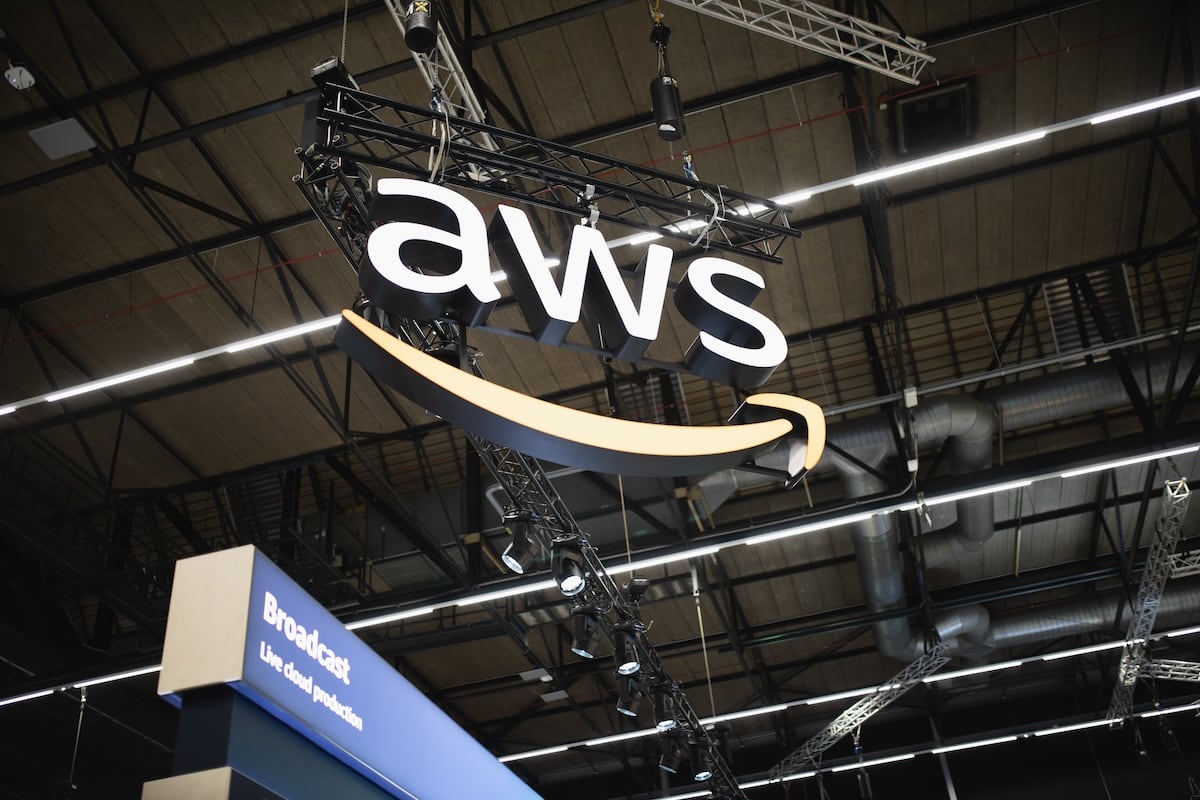AWS’s Nina Walsh on convergence of mediums creating new opportunities

Weekly insights on the technology, production and business decisions shaping media and broadcast. Free to access. Independent coverage. Unsubscribe anytime.
At the 2025 NAB Show in Las Vegas, amid demonstrations of new tech and workflows, AWS shifted its exhibit strategy to focus on something less flashy but increasingly urgent: operational efficiency.
Nina Walsh, global leader for industry business development, media and entertainment, at Amazon Web Services, explained this pivot during an interview at the company’s booth, where Formula 1 simulators delivered live feeds directly into AWS-powered production workflows.
“This year we’ve gone for more of a customer journey,” Walsh explained, gesturing toward demonstrations that emphasized business outcomes rather than technological capabilities.
As broadcasters and content creators face market consolidation and economic pressures, Walsh’s team has responded by showcasing tangible cost efficiencies rather than merely what’s technically possible.
“From our perspective, there’s this overarching theme now of convergence,” explained Walsh. “There’s this convergence of content mediums across the industry. Now, with that comes opportunities for new styles of content or new styles of production.”
This convergence is happening as cost pressures mount across the industry, forcing media companies to reassess their technology investments.
“One of the top three things that our customers are asking for is cost cutting and cost efficiency,” Walsh said.
The path to optimal cloud implementation varies significantly between organizations. “It’s unique for every company,” Walsh emphasized. “I think it depends what their operations look like. Are they in one location, are they in 20? Where is the majority of their production happening?”
The industry’s approach to cloud adoption has evolved since its initial rush, with companies taking more strategic approaches.
“We’ve got customers that are early adopters, and they’ve kind of gone… we want to go all in cloud,” Walsh said. “And there are others that are wanting to maintain a bit of both. So that’s fine too, it’s just about how do they really get the most value out of using our services to help them deliver their product.”
The pandemic accelerated cloud adoption out of necessity, forcing companies to experiment with technologies they might have previously considered optional.
“COVID was an accelerant for sure,” Walsh said. “I think it forced people really to try out things that they’d been maybe thinking about or they thought maybe it was a luxury to test it out and then all of a sudden it was a necessity.”
This shift to distributed production has created new possibilities for media organizations.
“I think now that we’ve worked in a dispersed nature, it now gives that possibility to continue to leverage that opportunity to have people working in all parts of the world and all sitting in the one place,” she noted.
Monetization remains a crucial focus for media companies seeking new revenue streams.
“With these converging of content mediums in general, it gives different opportunities for customers to monetize their data,” Walsh said. “That’s the conversation we have with every single customer. It is about how we can monetize existing data we already have and then what new streams we can help identify.”
Effective monetization strategies require deeper insights into viewer behavior and preferences.
“A big part of that is understanding your data, your first-party data and your third-party data, and then being able to understand your actual audience so that you can create the content that they want to see,” Walsh explained.
For media companies seeking to expand into new markets, Walsh noted Southeast Asia and India as regions with significant growth potential.
“Southeast Asia… not just because I’m located down there… is a hugely growing market because you’ve got a large population and a large population of Gen X. So, young people who all have these [mobile devices] and are wanting all of their content on their phones,” she said.
For broadcasters looking to enter these growing markets, cloud technology offers a strategic advantage.
“Moving into new markets can be scary for customers. Like if they don’t understand the market, they don’t understand the landscape, building their services on cloud and being able to go into that market is a relatively low overhead for them to do that in order to test out the market and then decide whether they would invest more,” she explained.
Walsh cited Warner Bros. Discovery’s recent launch of an AI platform called Cycling Central Intelligence for motorsport content as an example of adapting to changing audience preferences. “They’ve historically had an audience that you watched it on the television, and now all of a sudden they’ve got a different, totally different type of audience that are wanting the content pushed to their mobile phone,” she said.
When discussing AWS’s approach to AI implementation, Walsh emphasized practicality.
“From our perspective, it’s always about, what is the art of the possible, and balancing that with the art of the real,” she said. “So, what inspiration can you take from developments and enhancements in technology, and then how can you use those to really supercharge your business.”
AWS has invested heavily in AI capabilities, including the Amazon Bedrock suite.
“We’ve got all of the large language models and build on top of Bedrock,” Walsh noted, adding that “TwelveLabs is now available on Amazon Bedrock, which is really exciting for us. It’s a startup that we’ve been working with for the past year and a half.”
As the industry continues to evolve at an accelerating pace, Walsh remains optimistic about the opportunities ahead.
“The pace of innovation that’s happening at the moment is quite astounding,” she concluded. “I think our industry is always evolving and disrupting ourselves, but at the moment it seems like an even faster pace than usual. Which is exciting. It creates opportunities for new companies to emerge. For us it’s new customers emerging in new parts of the world.”
And for AWS, helping customers balance innovation with operational efficiency remains at the core of its approach in an industry where “broadcasting” has evolved into simply “content.”






tags
Amazon Bedrock, Amazon Web Services, AWS, cloud, NAB Show 2025, NAB Show News, TwelveLabs
categories
Broadcast Engineering, Content Delivery and Storage, Heroes, NAB Show